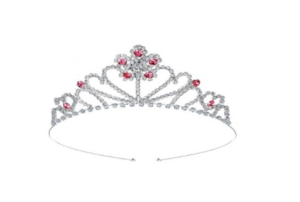In 2008, the Consumer Product Safety Improvement Act (CPSIA) was signed into law. This landmark law included provisions addressing lead content in children’s toys, toy safety, durable infant and toddler products, and testing and certification, requiring that toys and infant products be tested to mandatory standards before being sold. According to the Federal Consumer Product Safety Commission, children’s products manufactured or imported into the United States should not contain more than 100 parts per million (ppm) of lead content in accessible parts. In reality, however, no amount of lead should be acceptable.
The use of lead in plastics has not been banned in the United States. In children’s toys, lead is typically found in soft plastics and paint. According to the Centers for Disease Control and Prevention (CDC), lead dust can form on toys when plastics degenerate over time. Lead can also be combined with other metals, such as tin, to create alloys that are used in the manufacturing process of toys. Vintage toys that were made before the 2008 ban may contain dangerous and illegal levels of lead. With many toys being manufactured overseas where safety standards are less stringent, there’s a high risk of potential lead exposure. 
On January 25, 2024, approximately 12,440 units of children’s tiaras were recalled due to containing illegal levels of lead. The product came in a four pack of tiaras with different colored rhinestones embedded in each. This recall specifically involves the tiaras containing red rhinestones. The four tiara styles were sold and shipped together from China in the same packaging labeled “Yaomiao”. The tiaras were sold exclusively on Amazon.com from January 2021 through November 2023 for approximately $19.00.
How Can I Test My Children’s Toys for Lead?
Only a certified laboratory can determine the amount of lead in a toy. At-home lead testing kits are available, but they cannot accurately indicate the amount of lead present and they are generally not reliable. The most effective way to protect children from lead in their toys is to make sure they do not have access to products containing lead. Parents should go to cpsc.gov to check for possible recalls of their children’s toys.
How Can Children Consume Lead Through Toys?
Young children often place toys, their fingers and objects in their mouth, which is a part of normal development. When children put a toy that contains lead in their mouth, it exposes them to lead. Children can also consume lead through dust that forms on and around lead contaminated products. When a plastic toy containing lead is exposed to elements such as sunlight, air, or detergents, the chemical bond breaks down and can form a dust around the product. Young children may touch the plastic and then ingest the dust after putting their fingers in their mouth. Make sure to wash your children’s toys and hands regularly to help reduce the risk of hand to mouth transfer of contaminated dust.
What Should I Do If My Child Has Been Exposed to Lead?
If you think your child has been exposed to a toy containing lead, or if your child has a recalled toy, you should immediately take the toy away from the child, dispose of it in the trash, and contact your child’s healthcare provider. According to the Mayo Clinic, lead poisoning can be difficult to detect as most children who are exposed show no symptoms until dangerous amounts have accumulated. Children absorb lead easily, and it is more harmful to them than adults. Symptoms of lead poising in children include but are not limited to developmental delays, learning difficulties, irritability, weight loss, fatigue, seizures, and hearing loss.
A blood lead test is the best way to determine if your child has been exposed to lead. Your child’s healthcare provider can help you decide whether a blood lead test is necessary and can recommend appropriate action if your child has been exposed. As levels of lead in the blood increase, the adverse effects from lead also increase, making it imperative to remove the source of exposure as quickly as possible.
What Should I Do if My Child Has a Yaomiao Tiara?
Consumers of Yaomiao Children’s Rhinestone Silver Tiaras should immediately take away the recalled products from children and dispose of them in the trash. For a refund and more information on this recall, consumers can contact the retailer, LordRoadS, by email at , or online at Amazon’s Help section.
Have you or a family member been injured by a defective product? Talk to a personal injury lawyer about the potential liability of the manufacturer and retailer. SUGARMAN has a team of dedicated personal injury attorneys who represent those who have been injured. If you or a loved one has been hurt by a defective product or an accident and wish to speak to one of our attorneys regarding liability, please fill out a Contact Form, call us at (617) 542-1000, or e-mail .
